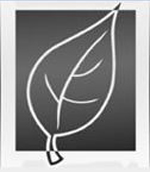Eritreans On The Run: Trends, Profiles & Destinations
According to the UNHCR, there were 15. 2 million refugees1 and more than 922,000 individual claims for asylum or refugee status registered worldwide in 2009.
Eighty percent of all world refugees are hosted in developing countries of which the major refugee hosting countries are Pakistan (1.7 million), Iran (1.1 million) and Syria (1,05 million). In terms of absolute numbers, the major countries of origin of refugees are Afghanistan (2.9 million) and Iraq (1.8 million). Afghanis and Iraqis accounted for almost half of all refugees under UNHCR’s responsibility. Eritrea with 209,200 refugees globally ranked 9th as a major source of refugees by the end of 2009.
By nationality, the highest number of new asylum claims in 2009 were filed by individuals originating from Zimbabwe (158,200) nine out of ten lodged in South Africa, Myanmar (48,600) and Eritrea (43,300) – of which two-thirds of all Eritrean requests were submitted to Ethiopia (17, 300) and Sudan (10,200). When you look at it with respect to asylum seekers2 per capita of population our country ranks as number 1. It is both shocking and heartbreaking to see Eritrean youth leaving their country in large numbers after it has been liberated after a long war of liberation. Though the total global Refugee Recognition Rate (TRR) – the proportion of refugee claims accepted – was 47 %. For Eritreans, the TRR was 80 – 90 % which shows their plight is recognised. Yet it is not strange that the President of the country denies there are refugees; though it is very difficult to understand why some Eritrean youth who live in the west deny human rights abuses in their country.
The main destination countries for new asylum seekers in 2009 was South Africa with almost one quarter of all individual applications worldwide (222,000) almost as many as that lodged in the 27 countries of the European Union (EU-27), The USA ranked 2nd with 47,900 applications and France 3rd with 42, 100.
Outside the neighbouring countries, there were a total of 10, 164 Eritrean asylum seekers in the industrialized countries, 95 % of who were in Europe. 260, 730 asylum seekers lodged applications EU-27 in 2009 with Afghanistan (20,410), Russia, Somalia and Iraq respectively topping the list of countries of origin of asylum seekers there. Eritrea ranks as number 17 with 5, 220. Regarding African countries, it is only Nigeria (10,345) and Zimbabwe (7, 810) that rank above Eritrea in terms of absolute numbers in the EU-27. The report on asylum in Europe was released by Eurostat.
When the European Free Trade Organisation (EFTA) that includes Norway, Iceland, Liechtenstein and Switzerland is included to the EU-27 in the statistics, then the number of Eritrean asylum seekers raises up to 9725. Norway is the preferred destination for Eritrean asylum seekers. Of the total of 9725, 27% sought asylum in Norway, 17 % in Switzerland, 14.8 % in the United Kingdom, 10. 6 % in Sweden, 9,3 % in Italy and 20.2 % in other European countries. It is not known what attracts Eritreans to Norway which has no colonial connection to Eritrea. Possible factors include having people they already know or the perception that Norway is a safe with a humane asylum policy and a good country to live in. Norway has introduced more restrictive measures regarding its asylum policies and perhaps as a result of that or due to other factors there was a reduction of 33 % of Eritrean asylum seekers in the first half of 2010 with a total of newcomers of 1018 from January to June 2010.
In Europe, in comparison to Eritreans, Zimbabweans prefer the United Kingdom (95%), Congolese prefer France (61%) and Vietnamese prefer Germany (55%). Regarding the profiles of Eritrean asylum seekers in the EU-27, 70% of them were in the age group 18 – 34 and 13% lie in the age group 35 – 64. The number of unaccompanied minors of Eritreans was 410. Women make up about 35 % of Eritrean asylum seekers in EU-27. In comparison, 9 out of 10 Sudanese, Pakistani, Algerian, Indian and Bangladeshi asylum seekers were men.
Eritrean asylum seekers have started to appear on medical publications. A recent report was on Eurosurveillance were 15 cases of relapsing vivax malaria were diagnosed among Eritrea refugees residing in Israel. What made it interesting to cover was the fact that Malaria was eradicated in Israel 50 years ago. It is indicated that until the end of 2009 there were 9,517 Eritrean refugees in Israel who constituted 48.6% of all asylum seekers that entered the country. In the first 4 months of 2010, 3,793 Eritrean asylum seekers entered the country which constitute 82 % of all asylum seekers who entered Israel during this period.
There has been several cases where Eritreans have been shot dead while trying to cross into Israel.
1 The term ‘refugees’ according to UNHCR include individuals recognised under the 1951 convention and its attached protocols, individuals granted complementary forms of protection or those enjoying temporary protection. This category includes people in refugee-like situations
2 The term ‘asylum seekers’ refers to people who have sought international protection and whose claims for refugee status have not yet been determined. According to the UNHCR report cited here, the term refers to claimants whose individual applications were pending at the end of 2009.
.
Dr. Mohamed Kheir Omer was an active member in the General Union Of Eritrean Students (GUES) affiliated to the ELF where he served as a member of the Executive Committee of the Union 1977-78. He joined the University of Asmara as a faculty member after independence where he served as the Dean of the College of Agriculture and Aquatic Sciences 92 – 96. He has authored or co-authored several scientific articles locally and internationally. He was a member of the G-13.



Awate Forum